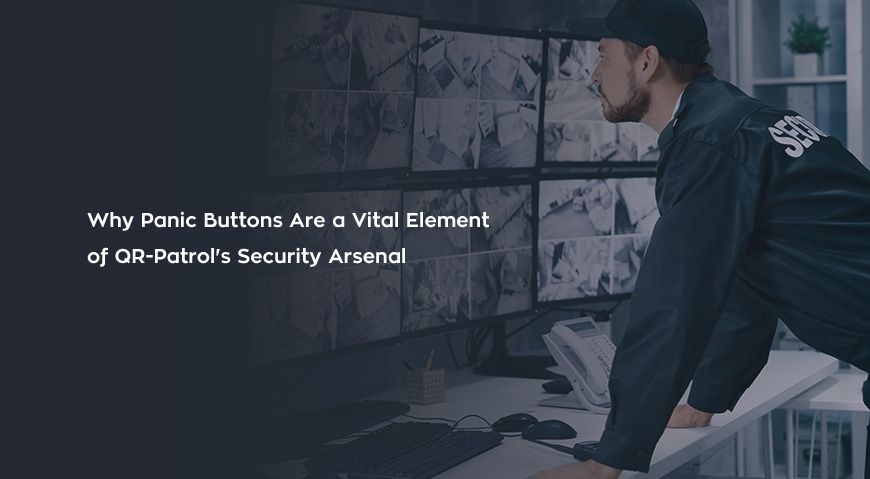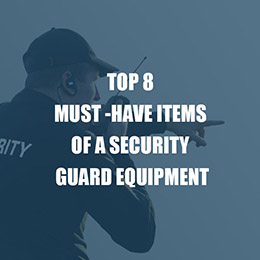- Posted by: blignos
- Published: 29-05-2024
- Category: Security articles
Why Panic Buttons Are a Vital Element of QR-Patrol's Security Arsenal
Panic buttons, in their simplest form, are devices designed to summon immediate assistance in emergencies. They come in various types, including physical buttons, mobile applications, and wearable devices. When activated, they transmit distress signals to designated responders or security personnel, triggering swift action in critical situations.
QR-Patrol, a leading-edge security solution, integrates panic buttons seamlessly within its framework. This integration amplifies the platform's efficacy by offering real-time communication and instant response capabilities in emergency scenarios.
- 1 Swift and Coordinated Responses: Panic buttons within QR-Patrol enable instantaneous communication between those in distress and security personnel. This immediacy expedites response times, allowing for swift intervention in crisis situations, thereby minimizing potential risks and mitigating threats efficiently.
- 2 Location Accuracy and Tracking: One of the standout features of panic buttons within QR-Patrol is their ability to provide precise location data. This information is invaluable during emergencies, enabling responders to pinpoint the exact location of the distress signal, expediting rescue efforts and enhancing overall security measures.
- 3 Employee Safety and Well-being: Prioritizing the safety and well-being of employees is a cornerstone of QR-Patrol's ethos. The integration of panic buttons aligns with this commitment, empowering employees with a sense of security and assurance, fostering a conducive work environment that prioritizes their safety.
- 4 Diverse Applications Across Industries: From healthcare facilities to educational institutions, hospitality sectors to corporate offices, panic buttons integrated into QR-Patrol find versatile applications. They cater to the unique security needs of each industry, ensuring a tailored and effective response to emergencies.
The significance of panic buttons extends beyond their immediate functionality. They serve as proactive measures, instilling a sense of security and confidence among individuals, fostering a culture of preparedness and risk mitigation.
 Mitigating Threats and Risks: Beyond their tangible functionality, panic buttons provide psychological reassurance to individuals. Knowing that immediate help is just a click away fosters a sense of safety and contributes to a healthier and more productive work environment.
Mitigating Threats and Risks: Beyond their tangible functionality, panic buttons provide psychological reassurance to individuals. Knowing that immediate help is just a click away fosters a sense of safety and contributes to a healthier and more productive work environment. Compliance and Regulatory Requirements: In various industries, compliance with safety standards and regulatory requirements is mandatory. Integrating panic buttons within QR-Patrol ensures adherence to these standards, demonstrating a commitment to safety and fulfilling legal obligations.
Compliance and Regulatory Requirements: In various industries, compliance with safety standards and regulatory requirements is mandatory. Integrating panic buttons within QR-Patrol ensures adherence to these standards, demonstrating a commitment to safety and fulfilling legal obligations. Challenges and Future Advancements: While panic buttons integrated into QR-Patrol offer significant advantages, challenges persist in their implementation. Ensuring seamless integration with existing security systems, addressing false alarms, and providing adequate training for personnel are among the hurdles to overcome.
Challenges and Future Advancements: While panic buttons integrated into QR-Patrol offer significant advantages, challenges persist in their implementation. Ensuring seamless integration with existing security systems, addressing false alarms, and providing adequate training for personnel are among the hurdles to overcome.
However, the future holds promising advancements. Incorporating artificial intelligence (AI) and machine learning within panic button systems could refine response mechanisms further. Predictive analytics could improve response accuracy, reducing false alarms and optimizing emergency protocols.
Panic buttons stand as indispensable components within QR-Patrol's comprehensive security infrastructure. Their integration elevates the platform's efficacy, ensuring swift responses, precise location tracking, and bolstering overall security measures across industries. As technology evolves, the continued refinement and innovation in panic button systems promise a safer and more secure future, where emergency responses are efficient, timely, and potentially life-saving. In the dynamic landscape of security solutions, panic buttons within QR-Patrol represent an essential and proactive approach to safeguarding lives and assets, reaffirming the platform's position as a leader in modern security practices.
Written by Maria-Christina Antoniou






















